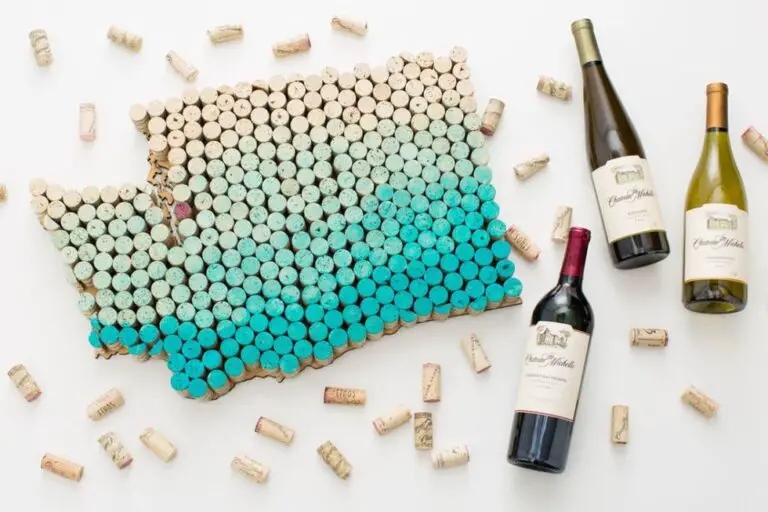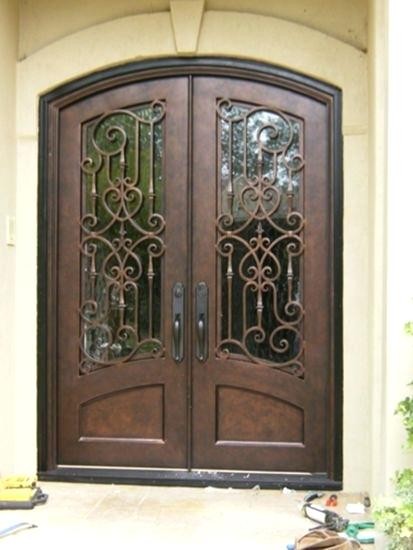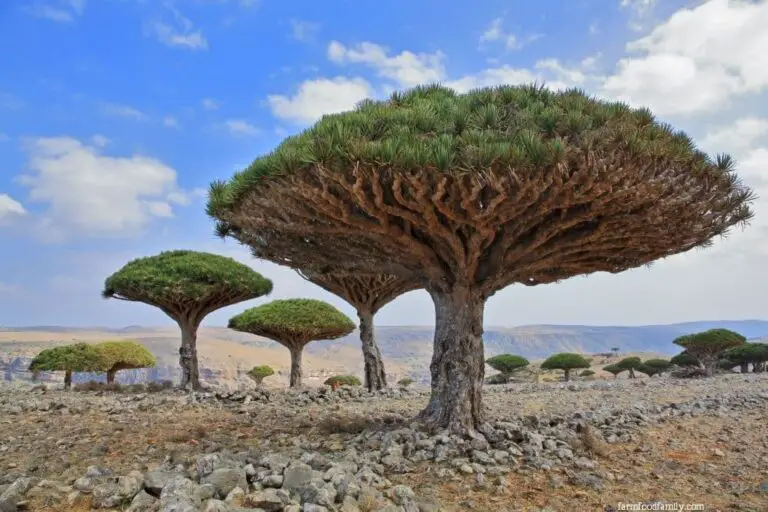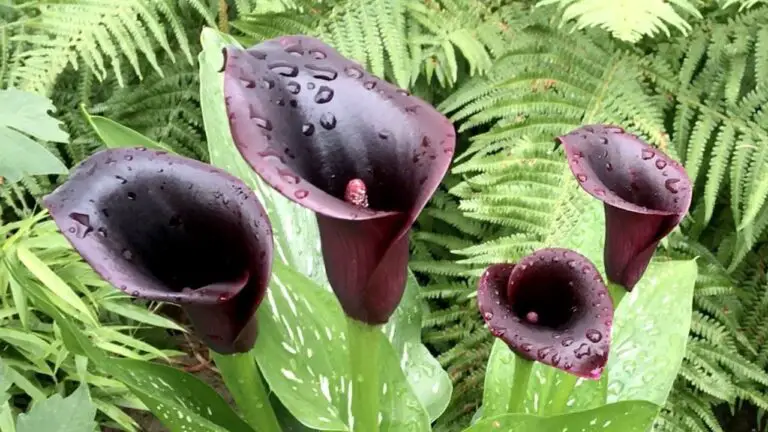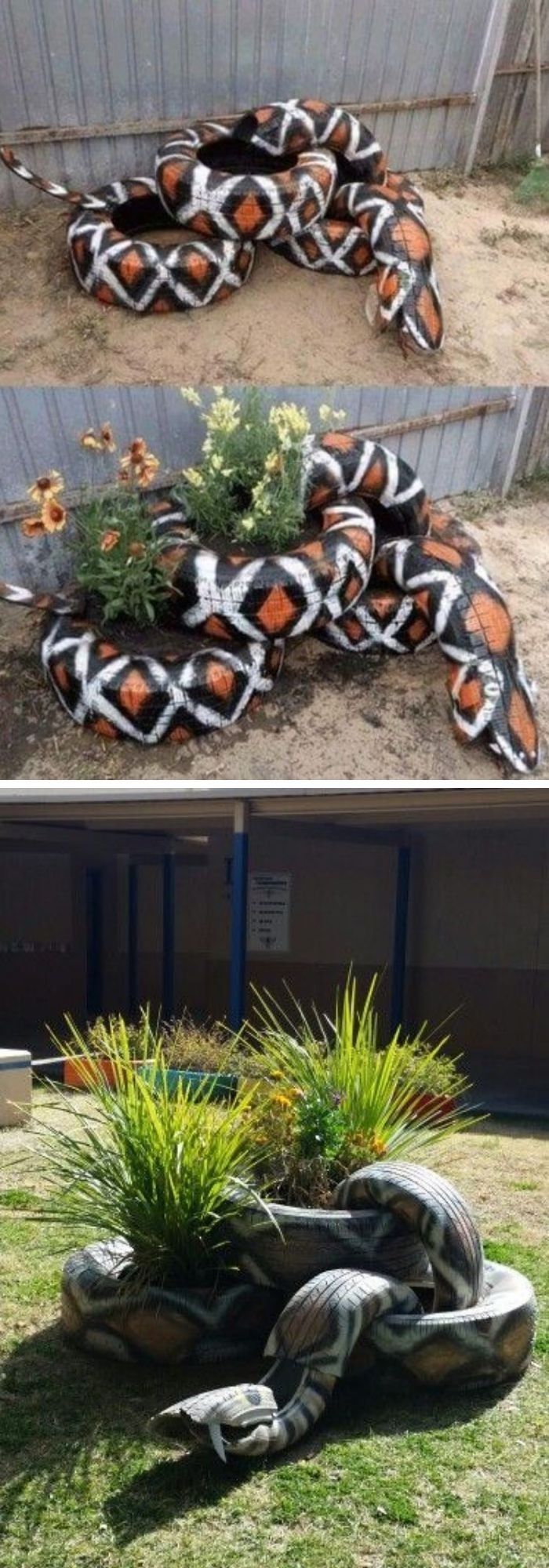39 Small And Dwarf Evergreen Shrubs For Small Landscapes
When it comes to selecting the perfect dwarf evergreen shrubs for your outdoor space, there are several factors to consider. Not only do these plants offer a multitude of benefits, including low maintenance, attractive appearance, and functional uses, but they also come in a variety of forms and categories. From full sun to shade, containers to specific zones, dwarf evergreen shrubs can be tailored to fit your unique needs and preferences.
For instance, if you’re looking for a shrub that thrives in full sun, options like Thuja occidentalis ‘Mr Bowling Ball’, Sunkist Arborvitae, and Spruce Bird Nest are great choices. On the other hand, if you have a shaded area, Aucuba japonica Gold Dust, Fetterbush, and Yew are excellent options. In addition to these categories, dwarf evergreen shrubs can also be grouped by their growth requirements, such as low maintenance varieties that require minimal care and upkeep.
Spiraea japonica Magic Carpet ‘Walbuma’, Picea abies ‘Tompa’, and Euonymus fortunei ‘Emerald ‘n’ Gold’ are just a few examples of these hardy shrubs. When selecting dwarf evergreen shrubs, it’s also important to consider your local climate and zone. For instance, if you live in Zone 3, options like Seaside Serenade Bar Harbor Hydrangea, Kelsey’s Dwarf Red-Osier Dogwood, and Wintergold Mugo Pine are suitable choices.
With over 40 types of dwarf evergreen shrubs to choose from, there’s something for everyone. Whether you’re looking for a flowering shrub, ornamental plant, or ground cover, these versatile plants can add beauty, functionality, and low maintenance to your outdoor space.
Shrub Types
Shrubs come in an array of sizes, shapes, and textures. The largest can grow up to 15 feet tall, while the smallest are no bigger than 1 foot. Their forms can be described as rounded, oval, upright, pyramidal, columnar, vase-shaped, or weeping, with some exhibiting a combination of these characteristics. Texture is also an important aspect, determined by the structure and size of their leaves. Leaves can be large and stiff, narrow and willowy, small and soft, or a blend of these features.
When it comes to leaf retention, shrubs fall into two main categories: those that lose their foliage in the winter (deciduous), and those that retain their leaves year-round (evergreen). Evergreens are further divided into broad-leaved and needle-leaved types. These various types of shrubs can be used in numerous ways to enhance a home garden, from providing structural interest to offering colorful blooms or vibrant foliage.
Structural Shrubs
In many ways, structural plants serve as the foundation of your garden’s design. By combining with small trees, they help create broad shapes and define spaces. Use these plants to provide a backdrop for seasonal bloomers, frame planting areas, or separate zones within your garden. Structural shrubs can take on either evergreen or deciduous forms. Evergreen varieties not only add structure but also serve as effective screens, windbreaks, or sound buffers.
A mass of large evergreen shrubs can create the perfect contrast for a vibrant focal point.
Foliage Plants
Foliage shrubs are prized for their diverse and often striking leaf characteristics. Their texture, shape, size, and color can vary significantly, ranging from the broad, waxen leaves of viburnums to the fine, needle-like foliage of yews. Many deciduous shrubs also boast vibrant fall colors, while evergreen varieties can display variegated or seasonal hues.
When incorporating these plants into your garden design, consider grouping them as background plantings for perennials or other flowering species, or showcasing individual specimens that highlight their unique features.
Flowering Shrubs
When choosing landscape plants that flower, consider their seasonality and how they’ll perform in your garden. These plants often steal the show with their vibrant displays, whether planted en masse or as individual specimens. Flowering shrubs like Encore azaleas and Knock Out roses excel in mixed beds, but to avoid visual overwhelm, think about the bloom periods of each variety. Ideally, you want the flowering times to overlap seamlessly from early spring to mid-summer to early fall.
Group plantings can create bold color statements, but be mindful that too many plants can overwhelm a small garden or bed. Instead, consider smaller groupings of 3 to 5 plants of the same variety. If an individual specimen boasts particularly striking characteristics, showcase it as an accent piece in a bed of ground cover or against a wall, where its assets can shine. And don’t overlook a plant’s form – its structure can add a new dimension to your planting.
Dwarf evergreen shrubs for full sun
When seeking dwarf evergreen shrubs capable of flourishing in full sun with minimal maintenance, consider these top picks. These compact, low-maintenance plants can tolerate direct sunlight and still deliver on beauty, making them perfect for busy gardeners or those new to horticulture.
Thuja occidentalis ‘Mr Bowling Ball‘ (American Arborvitae)
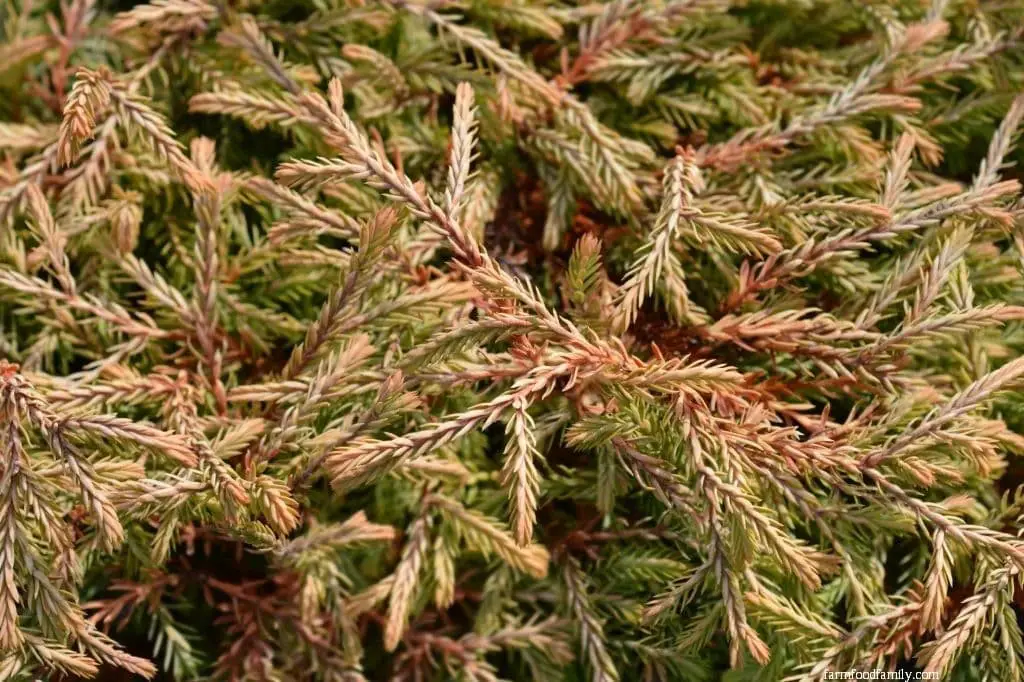
The Boxwood (Buxus sempervirens) is a compact, round evergreen shrub that tops out at around 3 feet in height. Its year-round vibrancy stems from the dense, leathery leaves that retain their deep green hue. A lover of sunlight, this plant thrives when provided with ample rays and well-draining soil, making regular watering essential for its health.
Sunkist Arborvitae (Thuja occidentalis ‘Sunkist’)
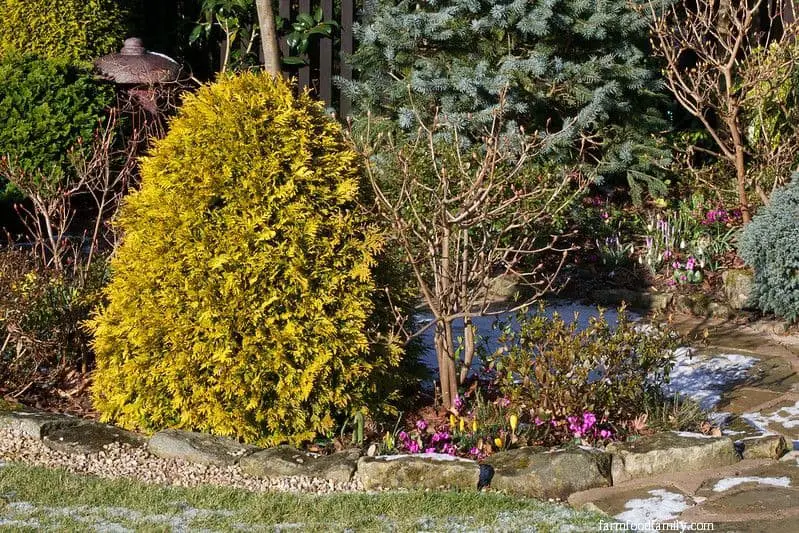
Accurate to its moniker, this plant thrives in an abundance of sunlight and can withstand prolonged periods of dry weather. As it matures, it develops a compact, pyramid-like shape, reaching heights of 10 feet while spreading 6 feet wide. Its distinctive appearance is characterized by golden green leaves featuring a deep green center and golden yellow tips.
Spruce Bird Nest (Picea abies ‘Nidiformis’)
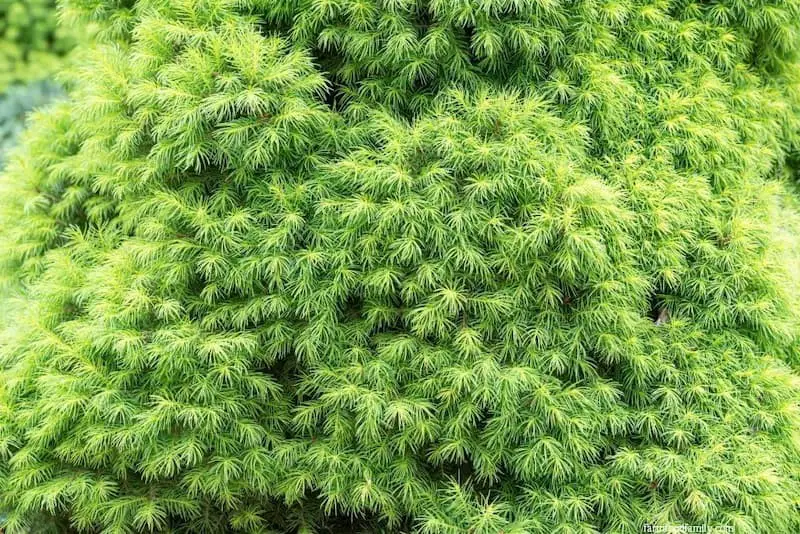
The ‘Bird’s Nest’ shrub earns its unique name due to its peculiar growth pattern, which resembles a bird’s nest at maturity. Measuring approximately 1.5 feet in height and spreading up to 4.5 feet wide, this compact shrub boasts layered branches and lush, deep green foliage. To keep it thriving, simply avoid overwatering and prune away any dead branches or leaves.
Dwarf evergreen shrubs for shade
When it comes to landscaping in shaded areas, selecting the right dwarf evergreen shrubs is crucial. Since they’ll be receiving limited sunlight, look for varieties that are tolerant of deep shade. If you’re starting from scratch, consider these adaptable options as a solid foundation.
Aucuba japonica Gold Dust

This evergreen shrub is renowned for its striking features, boasting glossy, pointed leaves adorned with golden flecks and elegant arching stems. As an ornamental specimen, it is commonly utilized as a hedge, serving as a landscape focal point or even thriving in containers when young. Its growth potential is quite impressive, reaching up to 8 feet in height.
Fetterbush (Lyonia lucida)
In many natural environments, fetterbush thrives in unique settings such as bogs and swamps. Its distinctive characteristics include thick, leathery leaves with a deep green hue and vibrant pink flowers that droop attractively. While mature plants can reach heights of up to 5ft, young specimens can be cultivated in containers under shade or partial sunlight conditions.
However, it is essential to exercise caution when interacting with the plant’s leaves as they are toxic to both humans and animals.
Yew (Taxus baccata)
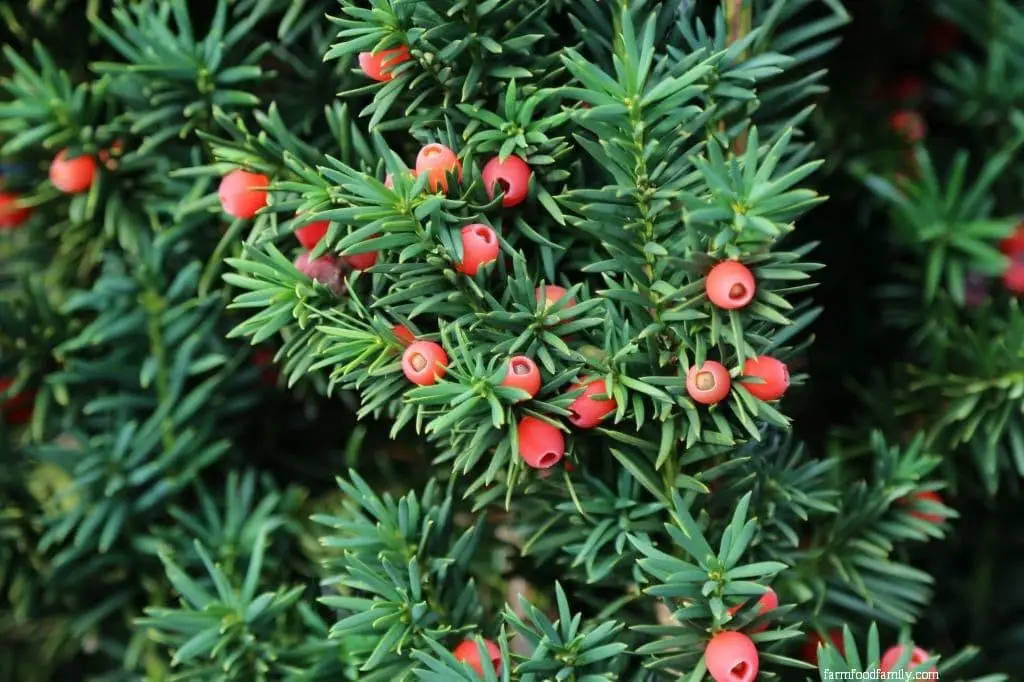
The Arborvitae (Thuja occidentalis) is a versatile evergreen shrub capable of thriving in both walkways and hedges. With proper maintenance, it can grow up to 10 feet tall, featuring dark green needles and small cherry-like berries. Notably, it requires filtered shade to reach its full potential, yet remains relatively drought-tolerant. However, it’s essential to exercise caution when handling this plant, as its berries and leaves are toxic to both humans and animals.
Dwarf evergreen shrubs for containers
For those with limited outdoor space or a passion for container gardening, compact evergreen shrubs are an excellent choice. Not only do these dwarf varieties thrive in containers, but they also boast unique foliage patterns and vibrant blooms that add visual interest to any garden setting.
Little Giant arborvitae (Thuja occidentalis ‘Little Giant’)
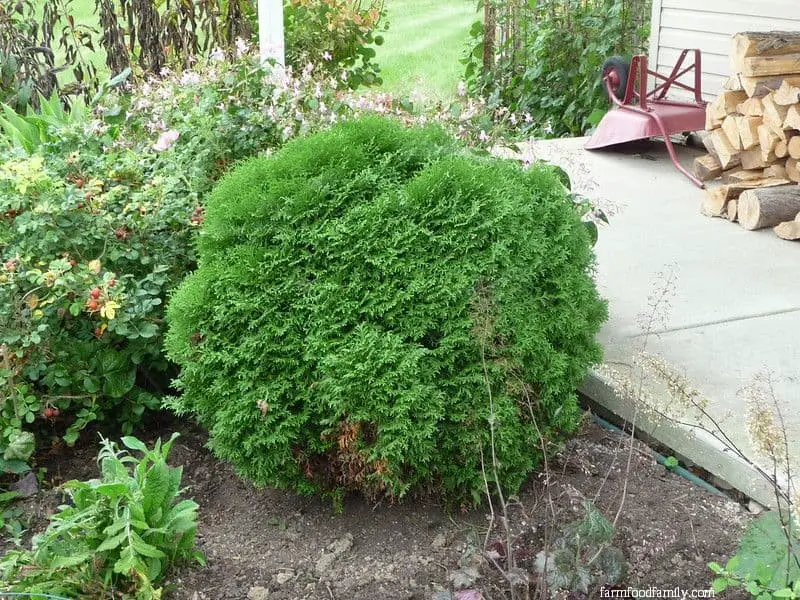
This spherical shrub, with its vibrant green hue, is a low-maintenance gem that doesn’t require frequent pruning. As it grows, it maintains a consistent height of 2ft and expands outwardly to approximately 4ft in width. One of its most attractive features is its climate hardiness, which means you can enjoy its bronzy-free foliage year-round. To thrive, it prefers moist soil conditions and can tolerate both full sun and partial shade.
Brugmansia (Angel’s Trumpet)
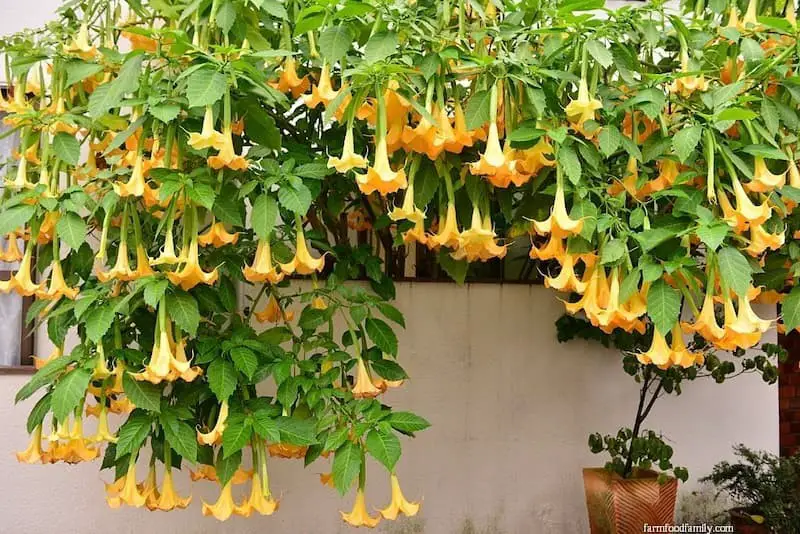
The brugmansia shrub is renowned for its show-stopping trumpet-shaped leaves that burst into bloom during spring’s awakening. Not only does it provide a visually stunning display, but it also boasts exceptional hardiness, capable of withstanding harsh winter conditions when planted in containers. As the sun dips below the horizon, the fragrant Brugmansia flowers release their sweet scent, drawing in nocturnal pollinators to complete the magical evening experience.
Ilex crenata ‘Brass Buckle’ (Japanese Holly)
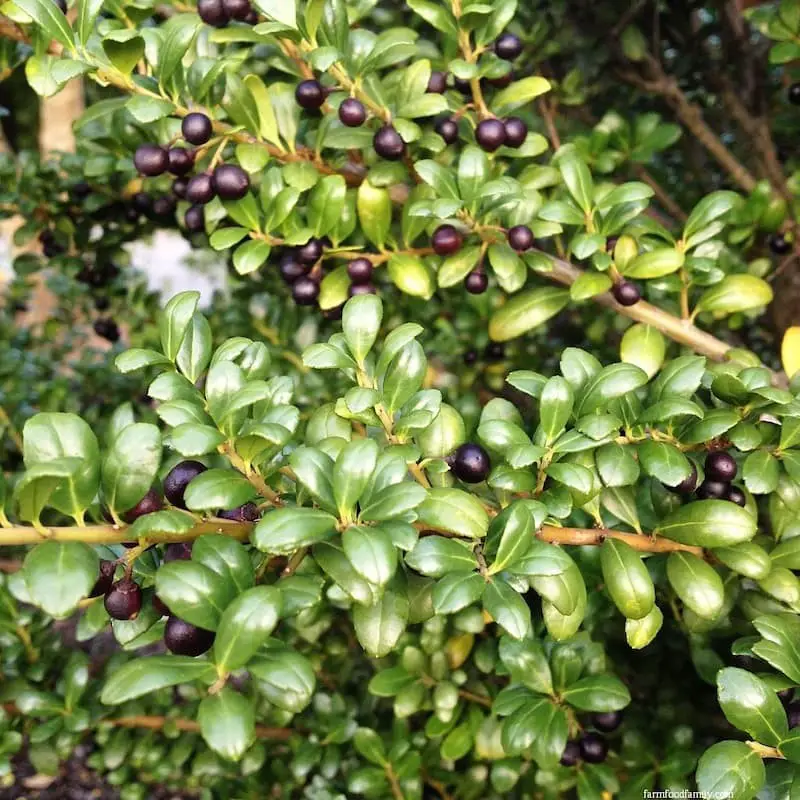
The ‘Japanese Holly’ cultivar boasts stunning yellow foliage with a radiant golden sheen that maintains its vibrant color throughout the year. This unique characteristic is further enhanced by the burn-resistance of its leaves, making it an ideal choice for container gardening, lining walkways and hedges, or adding a pop of color to rocky garden landscapes.
Low maintenance dwarf evergreen shrubs
Incorporating low-maintenance, evergreen shrubs into your landscape design is an excellent way to achieve a year-round visual display without the hassle of frequent pruning and upkeep. These versatile plants can provide the same level of functionality as their higher-maintenance counterparts while still offering stunning flowers throughout the seasons.
Spiraea japonica Magic Carpet ‘Walbuma’ (Japanese Spirea)
This ornamental onion thrives in full sun, displaying vibrant foliage throughout the year. Its leaves transition from bright red in spring to golden yellow in summer and finally rust-red in autumn. The plant’s branch tips produce small pink flowers, making it an excellent choice for borders and containers. Additionally, its natural resistance to disease and deer means you won’t need to worry about pests or diseases affecting its health.
As a bonus, this onion variety is also resistant to deer, which can be a significant problem in many gardens.
Picea abies ‘Tompa‘ (Norway Spruce)
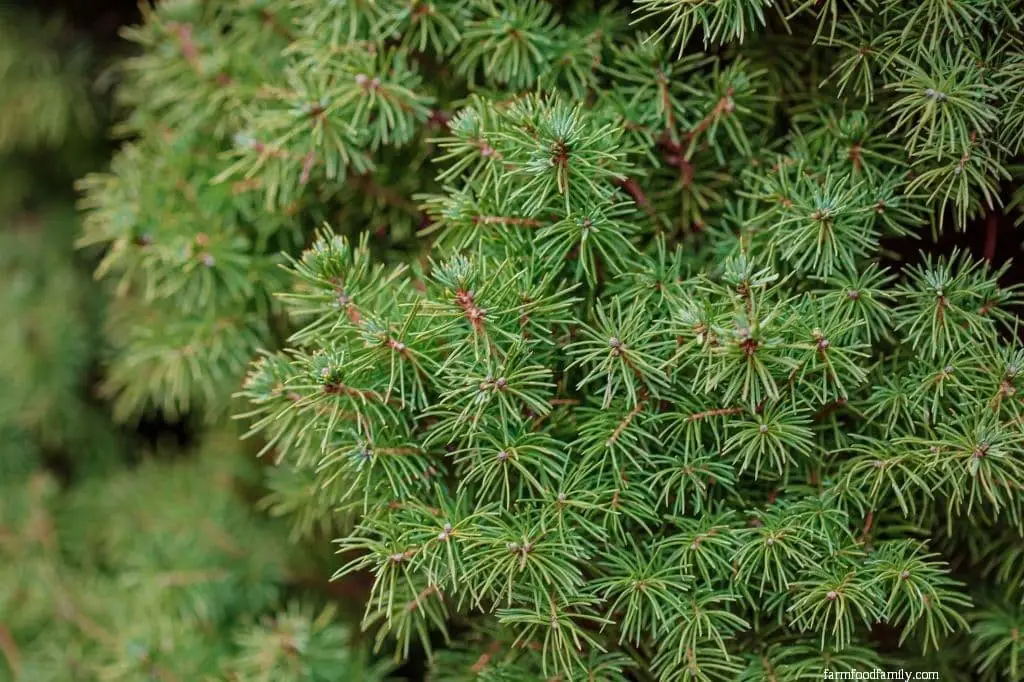
This spruce variety boasts a distinctive cone-shaped growth habit and lush, dark green foliage. Reaching heights of up to 3ft and spreading approximately 2ft wide, this evergreen tree excels in full sun and performs well in slightly acidic, well-drained soils that are characteristic of cooler climates. One of its notable features is its ability to thrive without pruning, making it a great option for busy gardeners.
Additionally, it displays remarkable tolerance to air pollution, ensuring it remains healthy and resilient even in urban environments. Overall, this spruce variety is remarkably low-maintenance, requiring minimal upkeep to maintain its attractive appearance.
Euonymus fortunei ‘Emerald ‘n’ Gold’ (Wintercreeper)
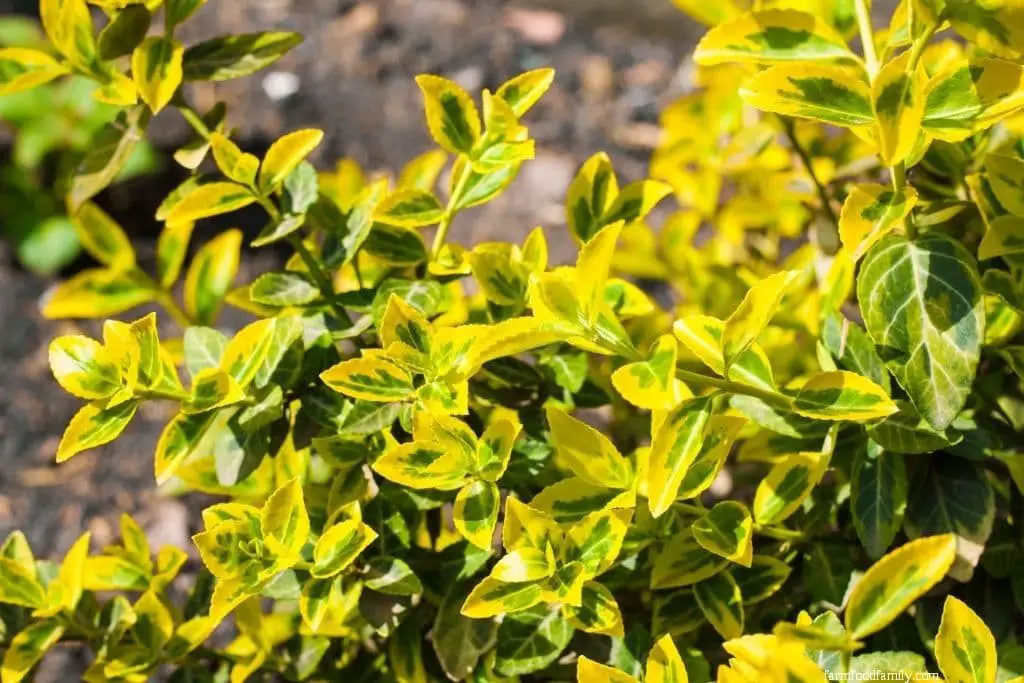
This low-growing evergreen shrub boasts a creeping growth habit, making it an ideal option for covering large areas with minimal upkeep. Its dense, elliptical leaves are a vibrant deep green during the summer months, featuring golden borders that add a touch of warmth. As the seasons change and winter and fall arrive, these same leaves transform into a beautiful shade of pink.
Not only does this versatile plant make an attractive addition to any landscape, but it also serves as a functional solution for soil erosion control. Its creeping habit allows it to thrive on sloped terrains, making it a practical choice for foundation plantings.
Dwarf evergreen shrubs for zone 3
Within the designated hardiness zone, temperatures typically range from a chilly -30°F to a frigid -40°F. Beyond the compact evergreen shrubs mentioned earlier, this region is also well-suited for an array of other plants, including asters, blue-eyed susan, apples, and bee balm, which thrive in these conditions.
Seaside Serenade Bar Harbor Hydrangea
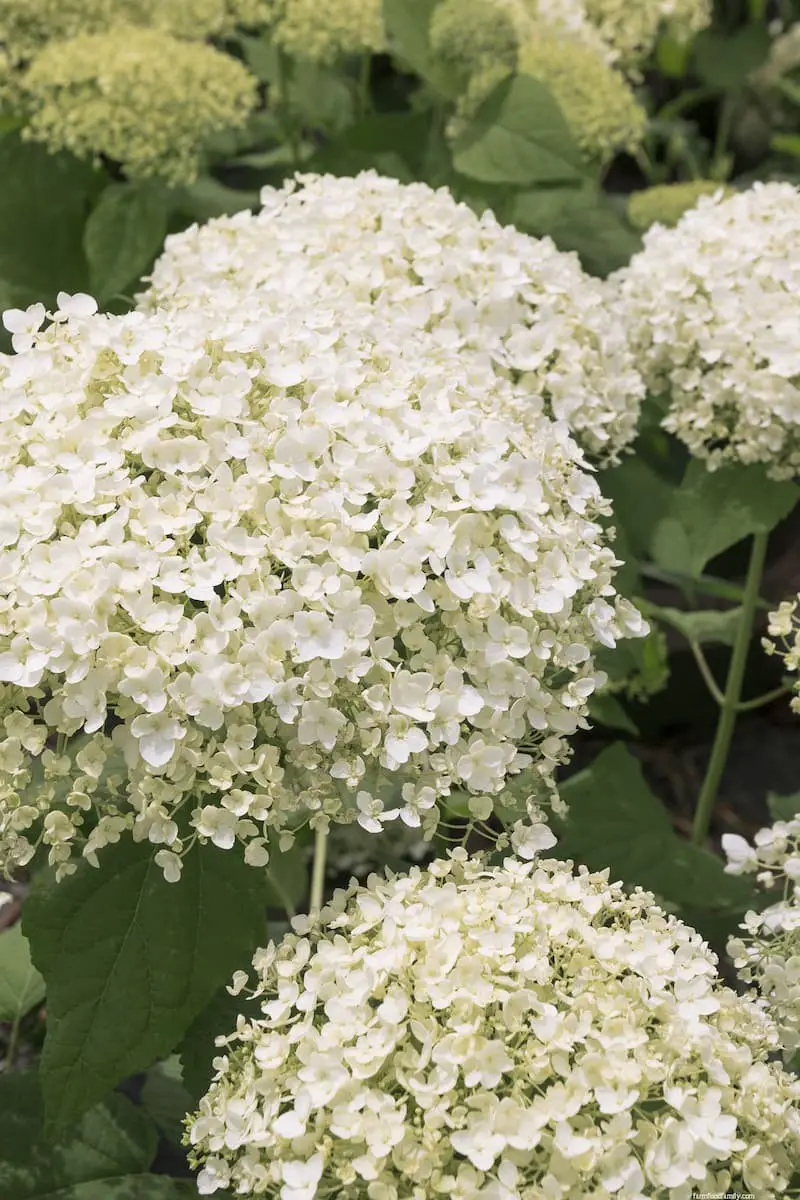
This sturdy variety is remarkably resilient, capable of withstanding the most intense gusts of wind and torrential downpours alike. Reaching heights of up to 4 feet, it thrives in conditions offering partial sunlight. Summer is particularly special as its showy white and creamy flowerheads burst forth in grandeur, making it an ideal choice for container gardens, borders, or fresh cut arrangements.
Kelsey’s Dwarf Red-Osier Dogwood
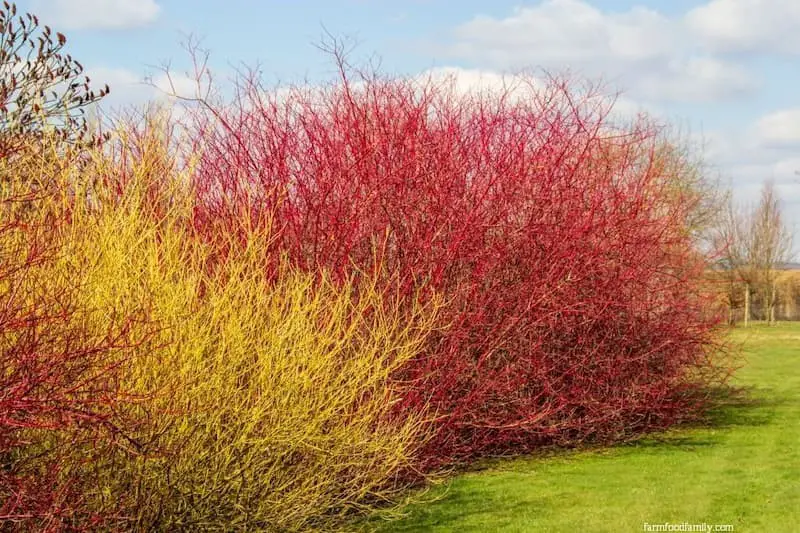
The Christmas fern (Polystichum setoides) boasts a striking appearance with its thin, red stems reaching up to 2.5ft in height during the winter months. As the seasons change, it transforms into a lush green color, thriving during spring and summer. Its versatility makes it an excellent choice for supplementing larger shrubs or serving as a foundation plant. Additionally, it can be used en masse to create a beautiful ground cover, adding visual interest to any landscape.
Wintergold Mugo Pine (Pinus mugo ‘Carsten’s Wintergold‘)
This unique dwarf evergreen shrub boasts an intriguing profile, capable of reaching up to 2ft tall when provided with full sun and consistent watering. During the summer months, its conical shape is distinguished by a deep green hue reminiscent of mint, before transitioning to a vibrant golden yellow in the fall and winter seasons. Its versatility allows it to thrive in both compact and expansive landscapes, serving as an effective hedge or border plant.
Dwarf evergreen shrubs for zone 4
Residing within USDA Hardiness Zone 3, you’ll find yourself in an environment where scorching summer days can reach temperatures of 70 degrees Fahrenheit (°F). Conversely, winters plummet to a chilling -10°F to -20°F. This region is particularly well-suited for cultivating hardy vegetables that thrive in such conditions.
Mountain laurel (Kalmia latifolia)
Connecticut’s state plant takes center stage in New England during June with its striking appearance. This broadleaf evergreen shrub measures only 3ft tall and wide, making it an ideal choice for garden borders or walkways. But its appeal extends beyond its compact size – the attractive reddish-purple blooms that adorn it are a true showstopper. To maintain its density and encourage a fuller display of those beautiful flowers, simply prune lightly after they’ve bloomed.
Juniperus squamata ‘Blue Star’ (Flaky Juniper)
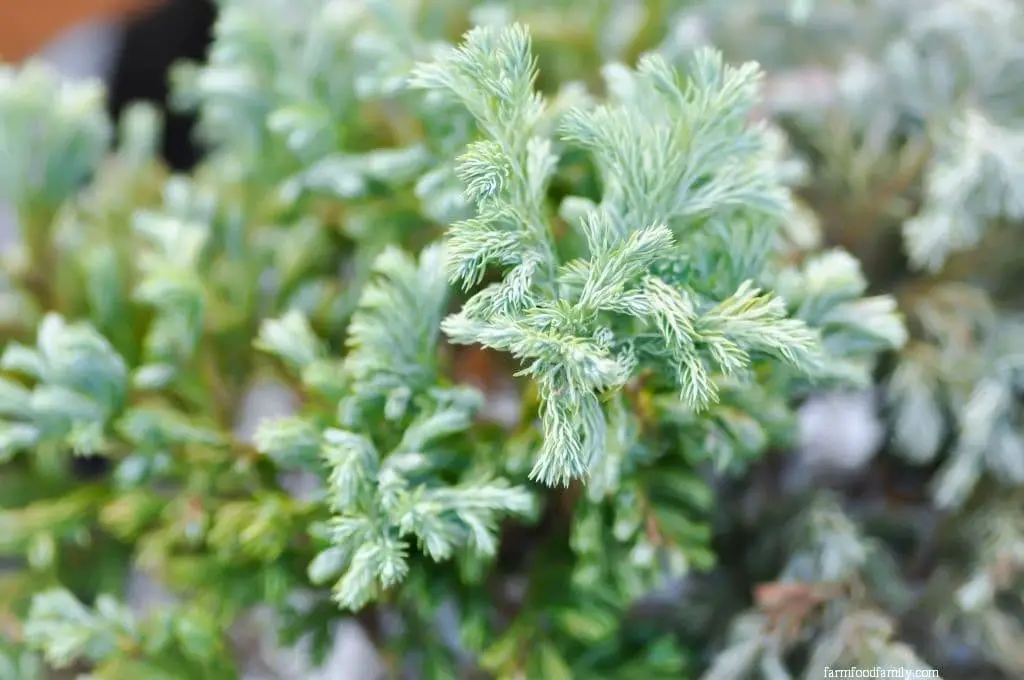
The Blue Star Juniper is often referred to as the dwarf version of its more majestic counterpart, the Blue Spruce. This compact evergreen boasts a modest height of just 3 feet and spreads outwards to about 4 feet in diameter. Its most striking feature is undoubtedly its distinctive blue-green foliage, which provides a stunning contrast when paired with shrubs boasting golden or yellow-green leaves.
While it can thrive in containers, the Blue Star Juniper is truly at its best as a ground cover, where its diminutive stature and spreading habit allow it to create a lush, verdant carpet.
Wintercreeper ‘Moonshadow’ (Euonymus fortunei)
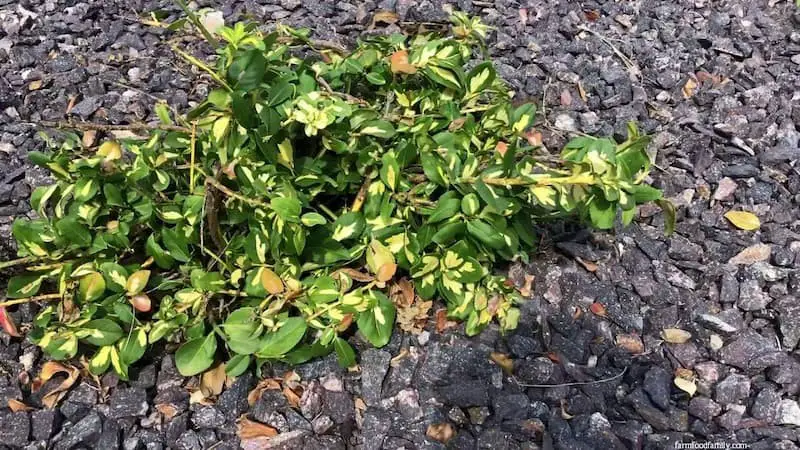
Euonymus fortunei’s ‘Golden Ribbon’ cultivar presents a unique leaf pattern, featuring golden centers surrounded by green borders and spots. As the seasons change, the golden hues gradually shift to an off-white tone during spring. This dense shrub requires pruning before spring to maintain its shape. When mature, it can reach up to 3ft in height, thriving in full sun, partial shade, or well-draining soils.
Dwarf evergreen shrubs for zone 5
In USDA Plant Hardiness Zone 5, plants can thrive in conditions where winter temperatures don’t dip below -20°F. This region encompasses parts of the United States, including Nebraska, Ohio, Utah, Wyoming, and Virginia, offering gardeners a diverse range of climates to work with.
Erica carnea ‘December Red’ (Winter Heath)
This charming plant has earned a special place in many hearts, thanks to its delicate clusters of pink, white, and lavender blooms that burst forth with remarkable frequency during the winter months – and if properly cared for, it can continue to bloom for an impressive six-month stretch. But its appeal doesn’t stop there: as a ground cover, it’s particularly well-suited for rocky gardens and sloped terrains, where it can thrive without becoming too unruly. While it only reaches a modest 1.
5 feet in height, its spread can still reach up to an impressive 4ft, making it a versatile addition to any landscape.
Euonymus fortunei ‘Emerald Gaiety’
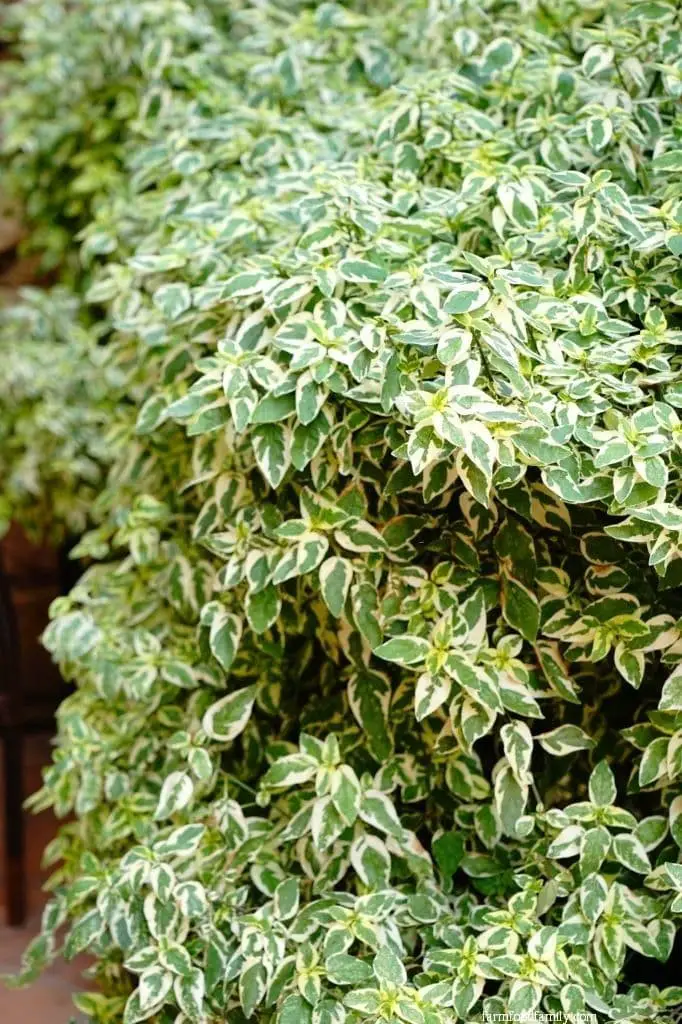
In contrast to the Emerald ‘N Gold’s more uniform tone, this plant boasts a unique foliage that combines green leaves with distinctive white flecks and borders. Its ability to grow and spread up to 5ft makes it an attractive addition to any landscape, while its bright color is sure to bring a pop of personality to the space. What’s more, its versatility allows for conditioning to grow as a vine, making it an ideal choice for training on trellises or other structures.
Yucca filamentosa (Adam’s Needle)
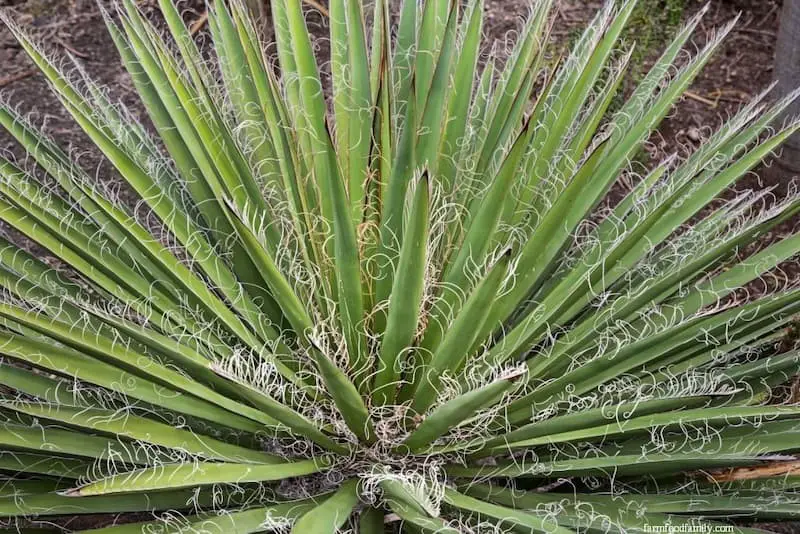
This striking yucca cultivar boasts vibrant green leaves and snow-white blooms, which emerge throughout spring’s mid-to-late period. As it matures, it can reach heights of up to 6 feet, making it an excellent choice for low-maintenance ground cover in arid garden areas where other plants may struggle to survive.
Dwarf evergreen shrubs for zone 6
In the heartland of North America lies a region where temperatures plummet to as low as -10°F to a chilly 0°F. This frigid zone, often found in Kentucky, Iowa, and Montana, is characterized by its biting cold, making it an extreme climate for many species to thrive.
Dwarf English Boxwood
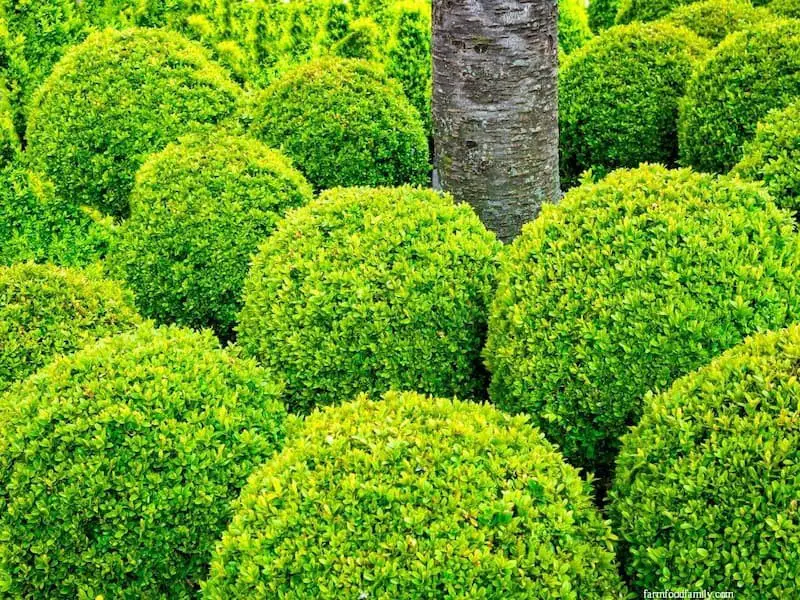
While sharing many similarities with common evergreen shrubs in terms of its iconic green hue, this unique specimen stands out from the crowd. Despite its compact stature, reaching only 3 feet in height, its timeless appearance makes it an excellent choice for both foreground and background landscaping applications. However, to maintain its signature conical shape, regular pruning is essential.
Additionally, a layer of mulch is necessary to preserve the optimal moisture levels this plant requires.
Haaga Rhododendron (Rhododendron ‘Haaga’)
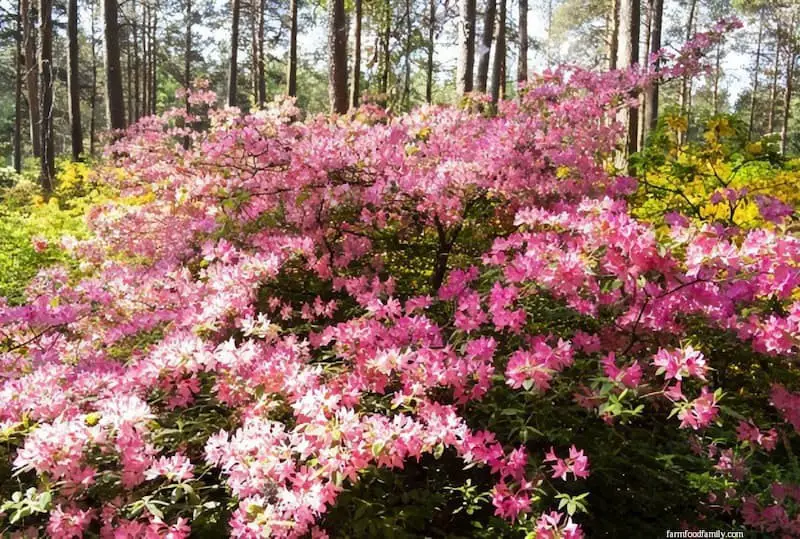
This compact evergreen shrub, reaching a mere 3ft in height, excels as a container plant in damp and cool climates. Its pale green foliage is accompanied by clusters of delicate baby pink flowers that bloom during the spring season. As a centerpiece in a landscape, it makes for an attractive focal point, while also proving suitable for low-hedge applications. To thrive, this shrub requires partial sunlight and consistent watering.
Crimson Kisses Weigela (Weigela florida ‘Slingco 1’)
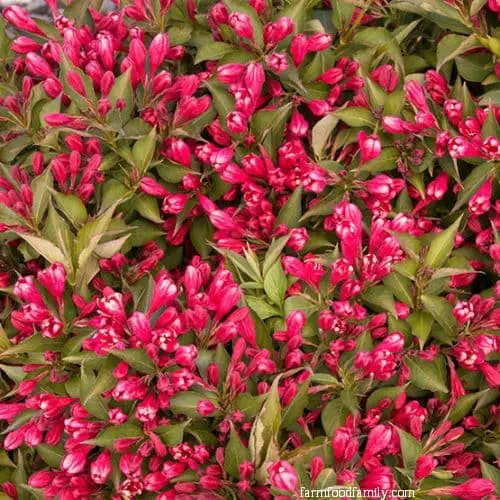
For larger shrubs, a dwarf evergreen with impressive foreground presence can be the perfect choice. This compact plant boasts a height of 3 feet and spreads evenly to create a rounded shape. It excels in full sun and requires consistent watering to maintain its lush appearance. One of its most striking features is the vibrant display of crimson red flowers adorned with white and yellow centers, which adds a pop of color to any landscape.
Additionally, it boasts light green foliage that is dense and full, providing year-round interest.
Dwarf evergreen shrubs for zone 7
Within this climatic zone, temperatures typically fluctuate between a chilly 0°F and a relatively mild 10°F. This region is particularly well-suited for cultivating an array of vibrant flora, including the bright blooms of marigolds, sunflowers that stretch towards the sky, geraniums with their delicate petals, and petunias featuring their trumpet-shaped flowers.
Lil Flirt Spirea

For those seeking a hardy and adaptable evergreen shrub that can thrive in challenging environments like compacted clay soil, this particular variety is an excellent choice. Reaching heights of 3 feet, it produces dainty pink flowers throughout the spring and summer seasons. Its compact growth habit makes it well-suited for urban landscapes or areas with high foot traffic.
Additionally, this shrub is renowned for its low maintenance requirements, heat resistance, and natural drought tolerance, making it an ideal option for busy homeowners or those seeking a stress-free gardening experience.
Tiny Tower Dwarf Alberta Spruce (Picea glauca ‘MonRon’)
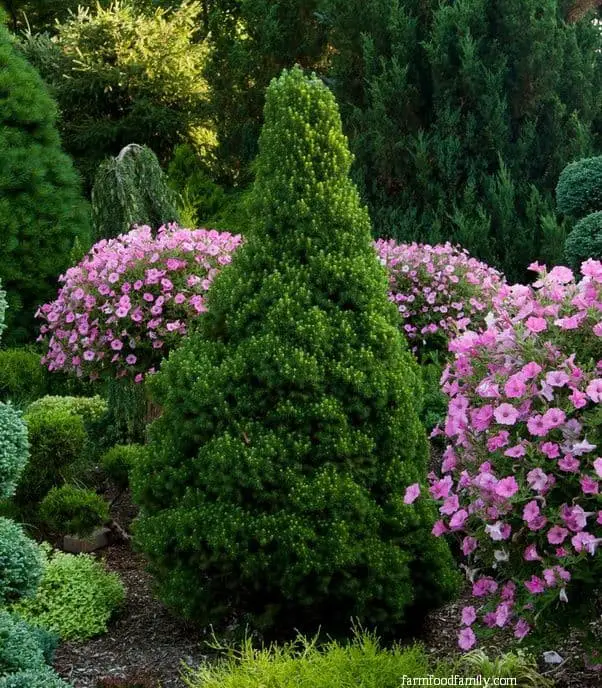
This dwarf evergreen shrub’s conical shape brings structure to compact gardens, making it an ideal choice for foreground planting or even formal topiary designs. Its modest size of 0.5ft tall means it won’t overwhelm, and its dense, deep green foliage remains a consistent feature year-round. As the foliage matures, it takes on a subtle grayish-green hue, adding depth and visual interest to your outdoor space.
Impish Elf Lily of the Valley Shrub

Thriving in partial sun, this flowering beauty can grow up to 5ft tall. One of its most striking features is its stunning winter display, showcasing dark pink and purple buds. As the seasons change, these buds burst forth into vibrant pink bell-shaped flowers, accompanied by deep green, glossy foliage and deep red stems. Its versatility also makes it an excellent choice for mass plantings, serving as a solid foundation plant in any garden.
Dwarf evergreen shrubs for zone 8
Characterized by a slightly more moderate climate, this zone boasts an average temperature range of 10°F to 20°F. Interestingly, it’s also the designated hardiness zone for not only the Pacific Northwest but also the southern regions of Texas and Florida, making it a significant area from a horticultural perspective.
Crape Myrtle ‘Petite Pinkie’
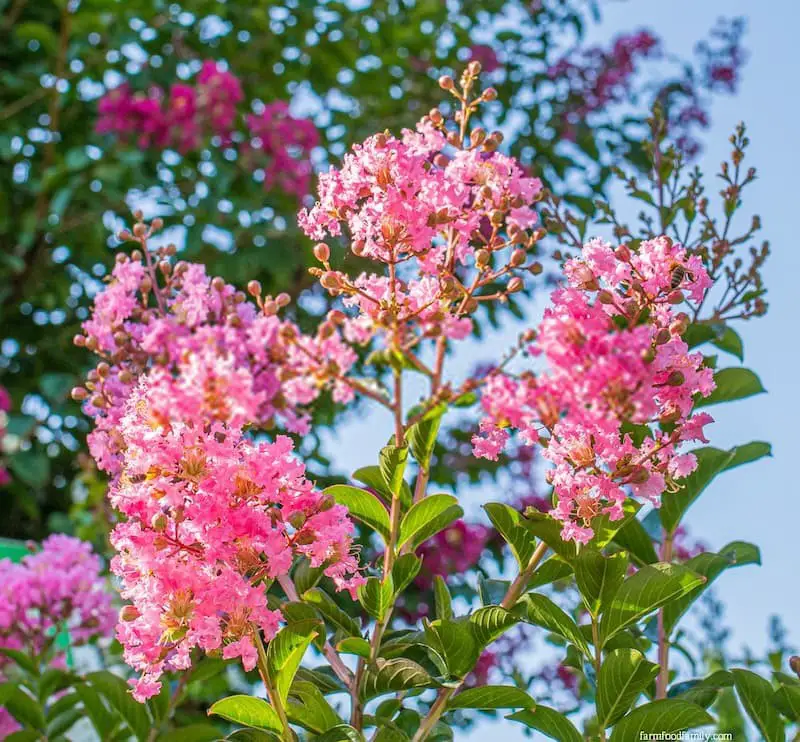
This particular cultivar is notable for its impressive size, reaching up to 5ft in height and spreading out to cover a space of approximately 4ft. Its most striking feature, however, is the abundance of clear pink flowers that bloom during both summer and winter. The tree’s bark boasts a smooth, green-brown texture that adds to its natural beauty.
While it can thrive as part of a larger landscape or even serve as an effective hedge, this shrub also excels when planted individually, allowing its unique features to take center stage.
Cape Cod Hydrangea
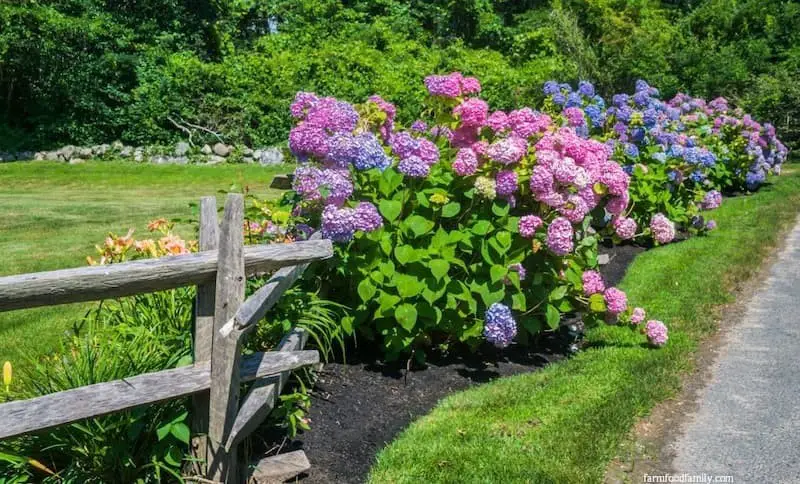
This charming evergreen shrub excels as a container plant, showcasing its lush foliage and vibrant blooms. Preferring partial shade to partial sun, it can grow up to 4ft tall. Its year-round flowering habit yields delicate baby blue and white blossoms, adding a touch of whimsy to any setting. The shrub’s dark green leaves form dense mounds, making it an ideal ground cover or hedge plant option. Plus, its stems provide gorgeous material for homemade floral arrangements.
Scallywag Holly

The Japanese Maple (Acer palmatum ‘Bloodgood’) boasts a stunning display of fall coloration, with its deep green foliage transforming into vibrant shades of purple and burgundy as the temperature cools. This deciduous tree maintains its rounded shape throughout the year, with dense foliage that makes it an ideal choice for hedges or borders. Reaching up to 4 feet in height and spreading approximately 3 feet wide, ‘Bloodgood’ is a low-maintenance option that’s also resistant to disease and pests.
Dwarf evergreen shrubs for zone 9
Characterized by mild winters, the warmest hardiness zone ranges from 20°F to 30°F (−7°C to −1°C). This region can be found in parts of California, New Mexico, and Arizona, where the climate is relatively mild compared to other zones. The gentle temperatures make it an ideal spot for a wide range of plants to thrive.
Ballerina Indian Hawthorn
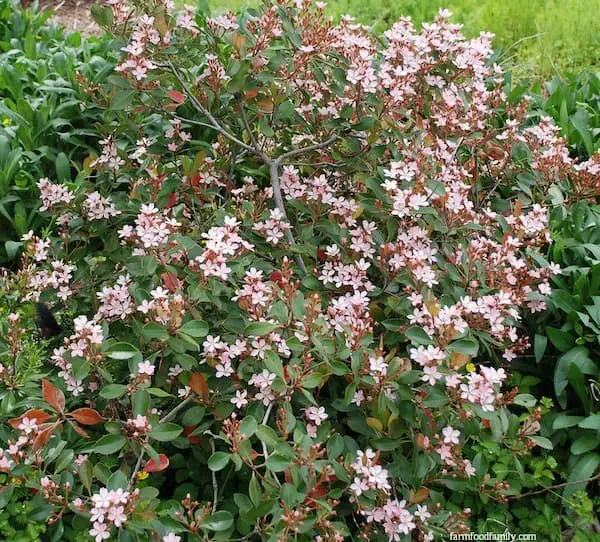
A stalwart evergreen shrub, this hardy dwarf variety boasts a robust presence. Its compact growth habit reaches 2.5ft in height and spreads out to approximately 4ft wide, thriving in the full sun’s warmth. Prior to spring’s arrival, it produces clusters of dark red berries, a harbinger of the vibrant display that unfolds when it blooms into small, rose-pink flowers during late winter to early spring.
As an added bonus, this shrub is remarkably resilient once established, tolerating heat and drought with ease. Its durable pale green foliage requires little to no pruning, while its sturdy constitution enables it to withstand pollution, strong winds, and heavy rainfall. Perhaps most impressive, however, is its ability to survive in poor soil conditions, making it an excellent choice for gardeners seeking a low-maintenance yet visually striking addition.
Cream de Mint Dwarf Mock Orange
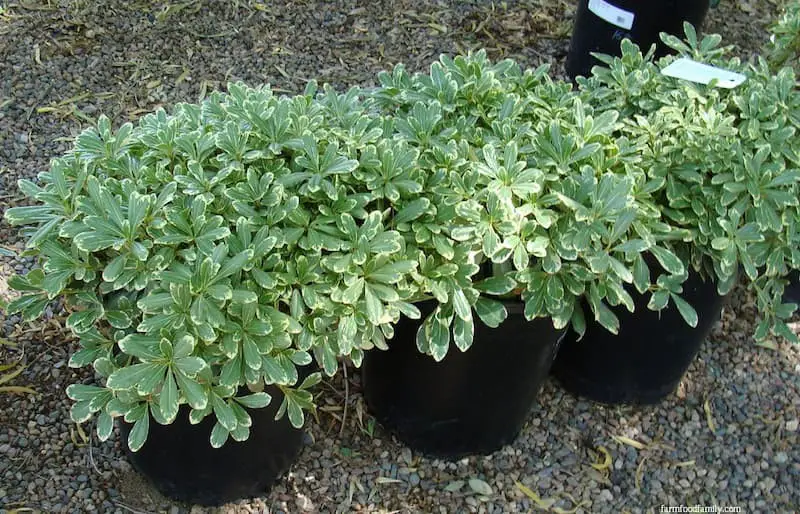
This compact dwarf evergreen shrub excels in full sun, reaching heights of 2.5 feet and spreading up to 3 feet wide. Its standout feature is its striking mint-green foliage, characterized by dense, glossy leaves with white borders and subtle flecks. As the seasons change, new growth emerges with a warm golden hue during spring. The plant’s versatility makes it an ideal choice for low-maintenance hedges or borders.
Little Ollie Dwarf Olive
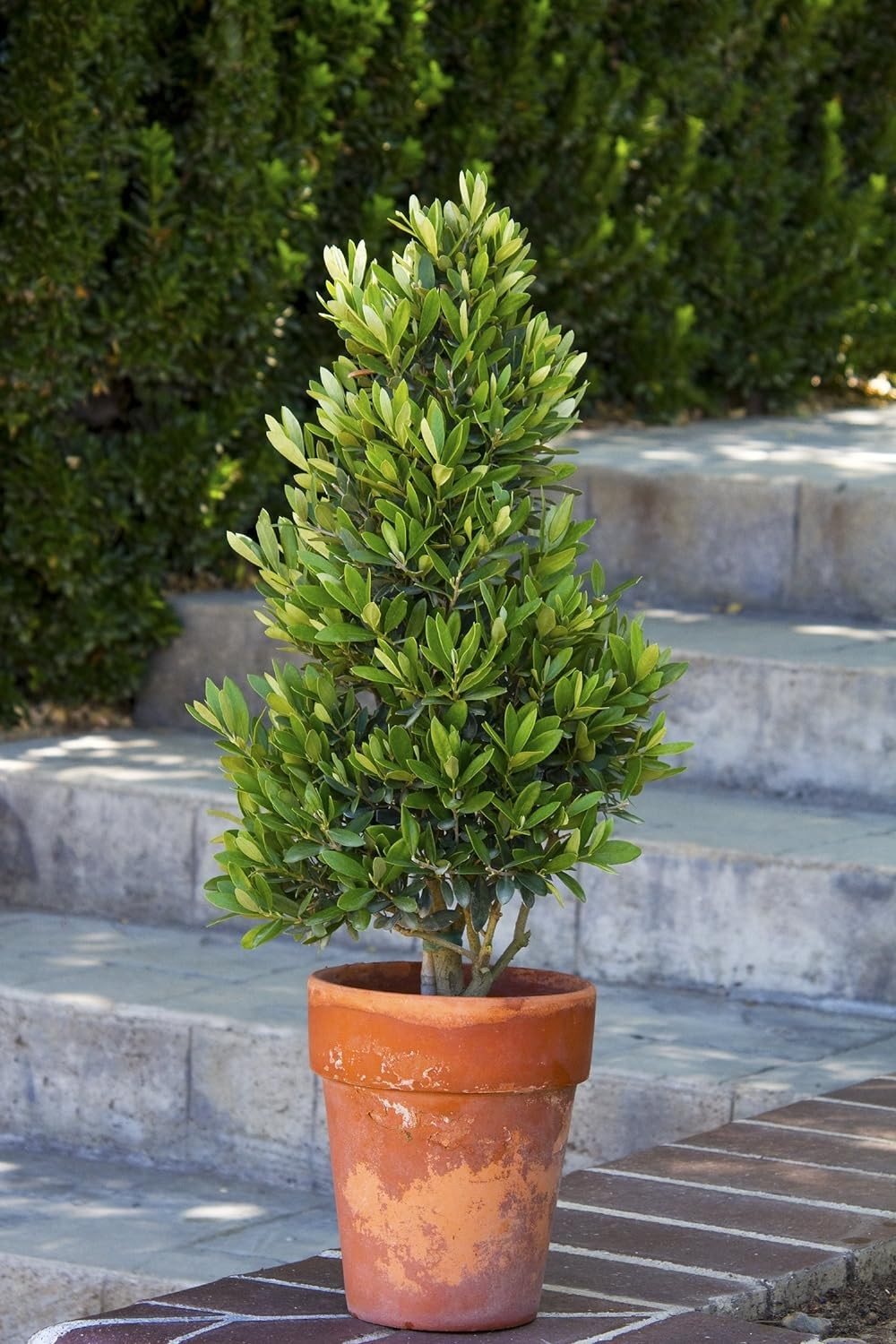
Imagine strolling through a lush garden where the sunlight dances across vibrant leaves that shimmer like diamonds. This striking succulent is a sight to behold, thriving in full sun and growing up to 4ft tall with its unique multibranch habit. The dense, deep green foliage features stunning silver undersides, making it a showstopper in any setting.
Whether you’re looking for a container plant or seeking to create low hedges on coastal landscapes, this heat, drought, and salt-tolerant beauty is the perfect choice.
Colorful Dwarf evergreen shrubs
For those seeking a statement piece in the form of compact, year-round interest, consider incorporating one or more of these vibrant dwarf evergreen shrubs into your landscape design.
Japanese pieris (Pieris japonica)
This dwarf evergreen shrub is a treat for the eyes throughout the year. Its deep green foliage remains consistent in most months, but don’t be surprised if it takes on a pop of color during spring – depending on the cultivar, leaves can turn glossy red, creamy white, or even salmon pink. In winter, the shrub transforms into a stunning crimson red, with subtle pink flecks adding visual interest.
To top it all off, in the spring, delicate light pink blossoms emerge, accompanied by a subtle fragrance that adds to its allure.
Rhododendron Maximum ‘Compacta‘
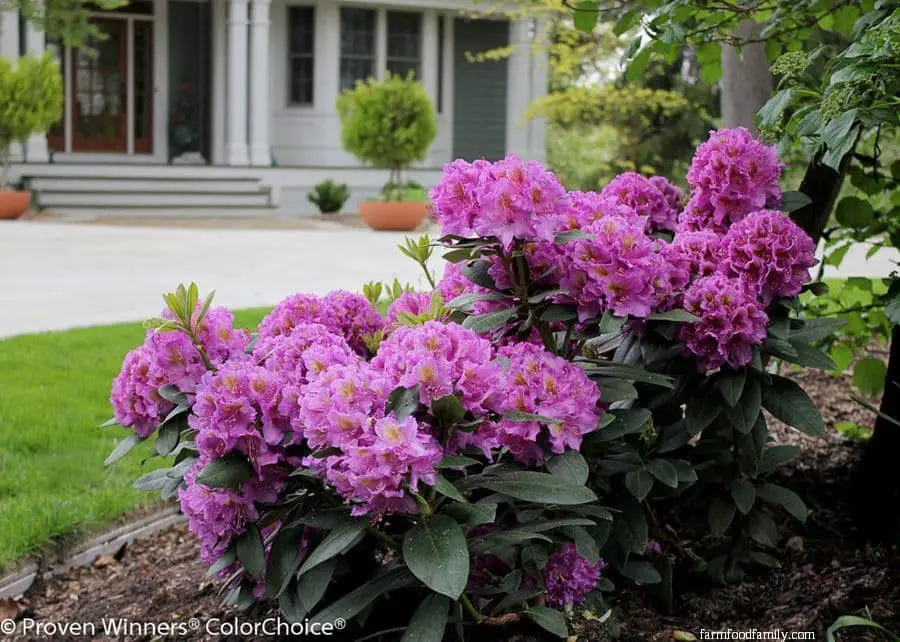
The compact Leptodermum rhododendron, often referred to as the dwarf version of its more famous counterpart, boasts broad leaves and a stunning display of blooms during the spring season. Its clusters of delicate pink and lavender flowers are truly showstopping. As a low-maintenance option, this shrub makes an excellent foundation plant or border feature. Moreover, it requires little upkeep, as pruning is not necessary.
Additionally, its cold-hardy nature allows it to thrive in temperatures as low as -40°C.
Dwarf Azalea
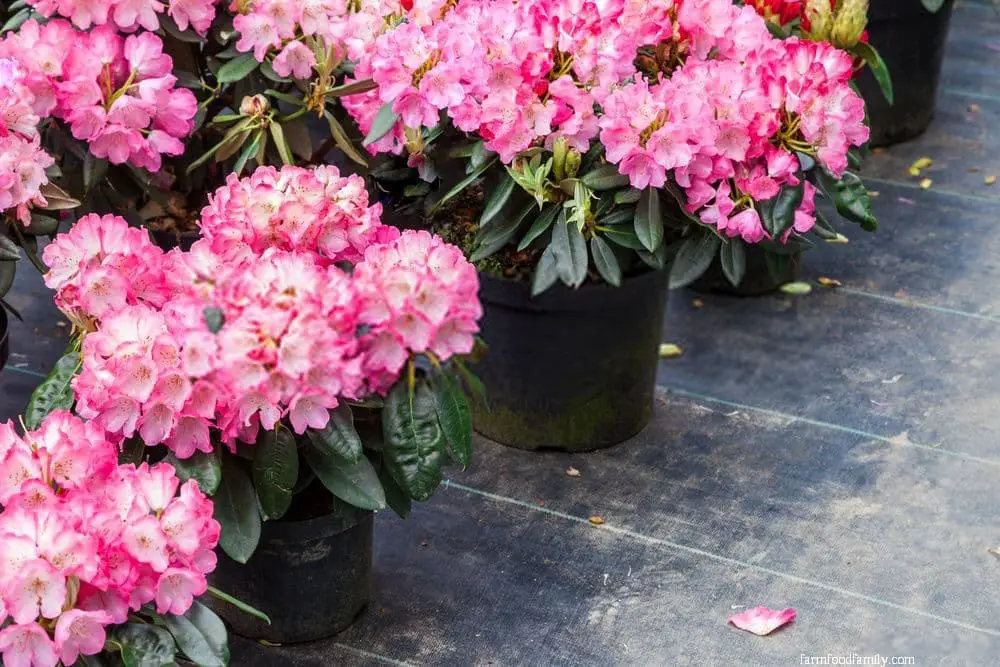
The coastal azalea, also known by its common name, is an evergreen shrub that boasts a striking display of white, funnel-shaped flowers in late spring. As the blooms fade, the plant’s glossy, leathery leaves unfurl, adding texture and depth to its overall aesthetic. One notable feature of this shrub is its ability to emit a distinctive musky scent, making it an attractive choice for walkways, garden borders, and container plants.
What’s more, the coastal azalea is remarkably low maintenance, capable of growing up to 3ft tall with minimal care. However, it’s essential to exercise caution when handling this plant’s leaves and stems, as they contain toxic compounds that should be avoided.
Deer resistant dwarf evergreen shrubs
Beyond the obvious benefits of reduced upkeep, incorporating deer-resistant plants into your landscape can also save you considerable time and resources spent on repairing and enhancing your outdoor space. In this regard, consider the following compact evergreen shrub options that fit the bill.
Boxwood Baby Gem
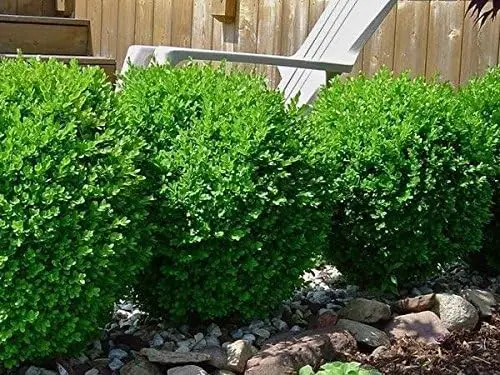
Looking for a reliable and attractive evergreen shrub that’s deer-resistant? This mound-like beauty is perfect for creating a hedge or lining your walkway. At maturity, it reaches 3 feet tall with a low-maintenance growth habit that makes pruning a breeze. The real showstopper is its dense, glossy foliage, which features small, oval-shaped leaves that are the epitome of elegance. Simply click here to get yours on Amazon and start enjoying this lovely shrub’s many benefits.
Cypress King’s Gold (Chamaecyparis pisifera filifera aurea)
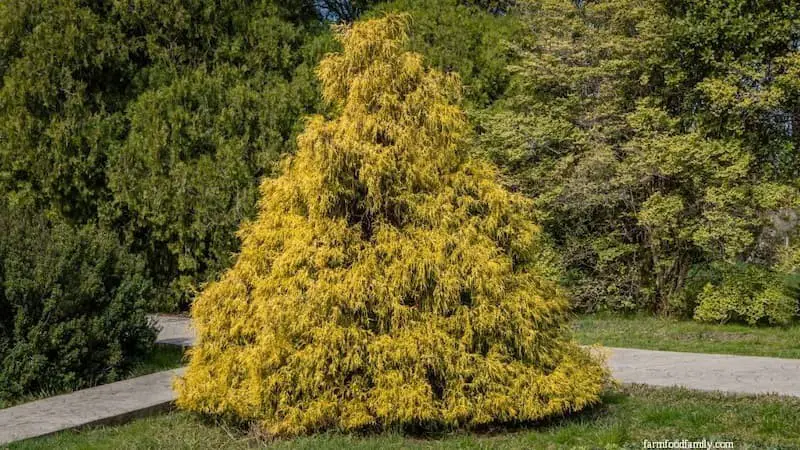
The Golden Green Scalea’s distinctive feature is its year-round scaly foliage that maintains a vibrant golden hue. During the summer months, this foliage takes on an even more radiant glow, making it nearly impossible to overlook. With the potential to reach heights of up to 6ft, this slow-growing yet low-maintenance specimen can thrive in various conditions. Its resistance to deer, heat, and humidity only adds to its appeal.
Juniperus horizontalis ‘Golden Carpet’ (Creeping Juniper)

The Golden Creeping Thyme is a resilient plant that boasts impressive resistance to deer, disease, and drought. Its functionality doesn’t stop there – it’s also an excellent choice for stabilizing sloped banks and controlling erosion when used as a ground cover. Year-round, its golden yellow foliage provides a warm and inviting visual appeal, which subtly shifts to soft mauve hues during the winter months, adding a touch of elegance to the landscape.
Conclusion
Nature has gifted us with the humble dwarf evergreen shrub, a treasure trove of ease and convenience. Irrespective of your level of familiarity with these plants, cultivating them is an achievable feat due to their remarkably low-maintenance and straightforward growing characteristics. The widespread appeal of dwarf evergreen shrubs can be attributed to their numerous benefits. This roundup aims to provide a solid foundation for understanding what makes these shrubs so coveted.


